
"Summer of Insects" and biodiversity
Excursions in the Ostfalen Technology Park
For the second time this year, NABU Barleben invited to an excursion to the Technology Park Ostfalen. Under the leadership of Jörg Brämer and Susen Schiedewitz, special attention was paid to insect diversity in the structurally rich green spaces on August 4th, 2019. On the occasion of the nationwide NABU action "Counting what counts", various types of insects were recorded and counted. In addition, the participants got valuable insights into the importance of the different landscape types of the technology park. The weekly inventory of insects in the TPO since mid-April makes it clear that previously common species, such as the Small Tortoiseshell (Aglais urticae) and the Peacock Butterfly (Inachis io), are only sporadically and rarely found. In contrast, there is a significant increase in southern species that successfully colonize and spread in our biotopes as a result of climate change.
More than 16,000 friends of nature have followed NABU's call and reported data on their garden's insect presence or surrounding biotopes.
With the action long-term conclusions about the distribution and frequency of the native insects are to be drawn. Thus, both declines of individual species and the spread of heat-loving species occurring in the course of global warming can be documented.
On August 27th, the area maintenance and the (re-) design of certain areas by the beaver and their effects on biodiversity were in the foreground of the excursion.
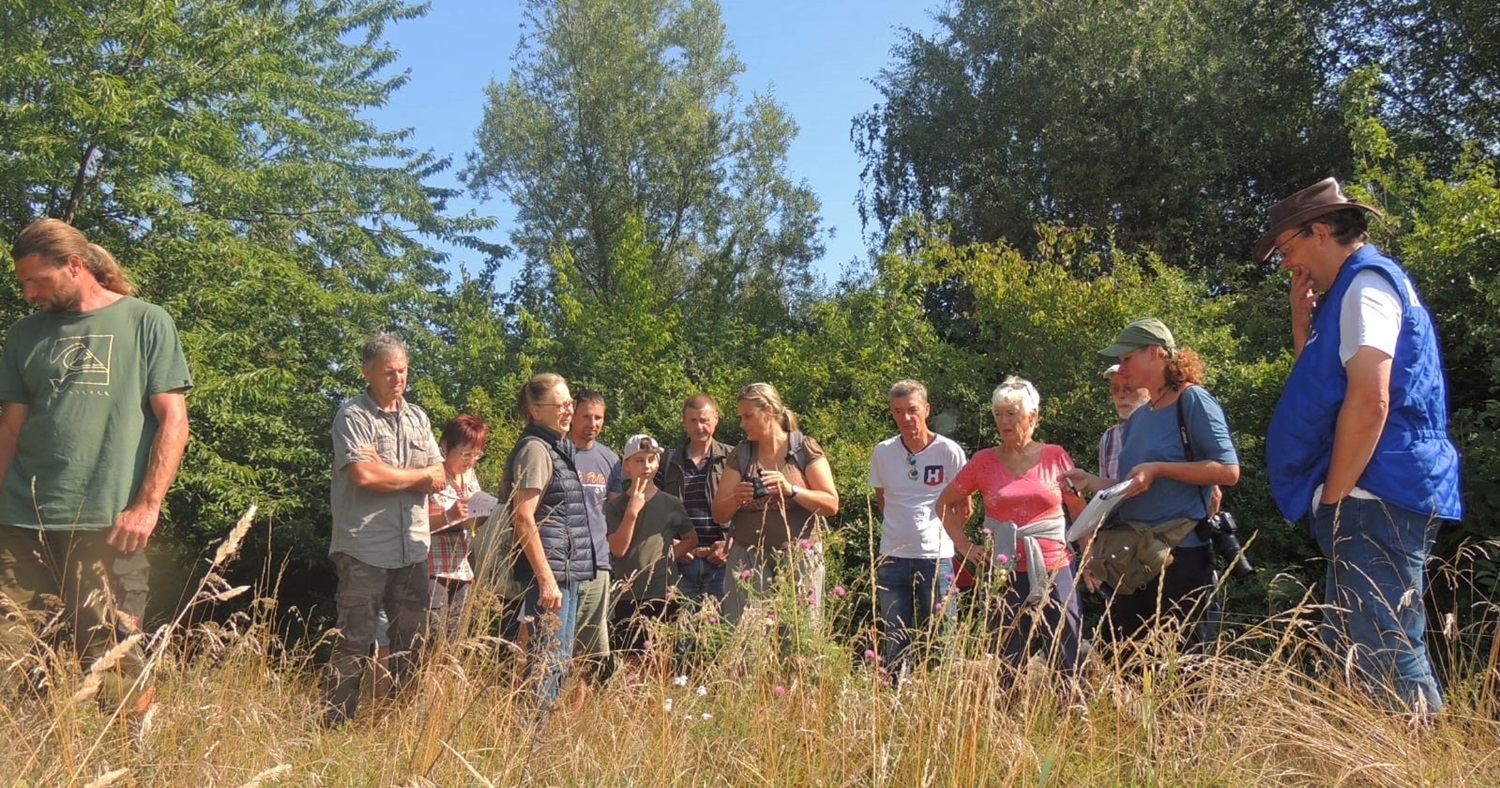
Susen Schiedewitz explains to the participants of the excursion the importance of uncut strips of meadows and high-flowering native shrubs for insect diversity. Photo: Gertraud Rehberg
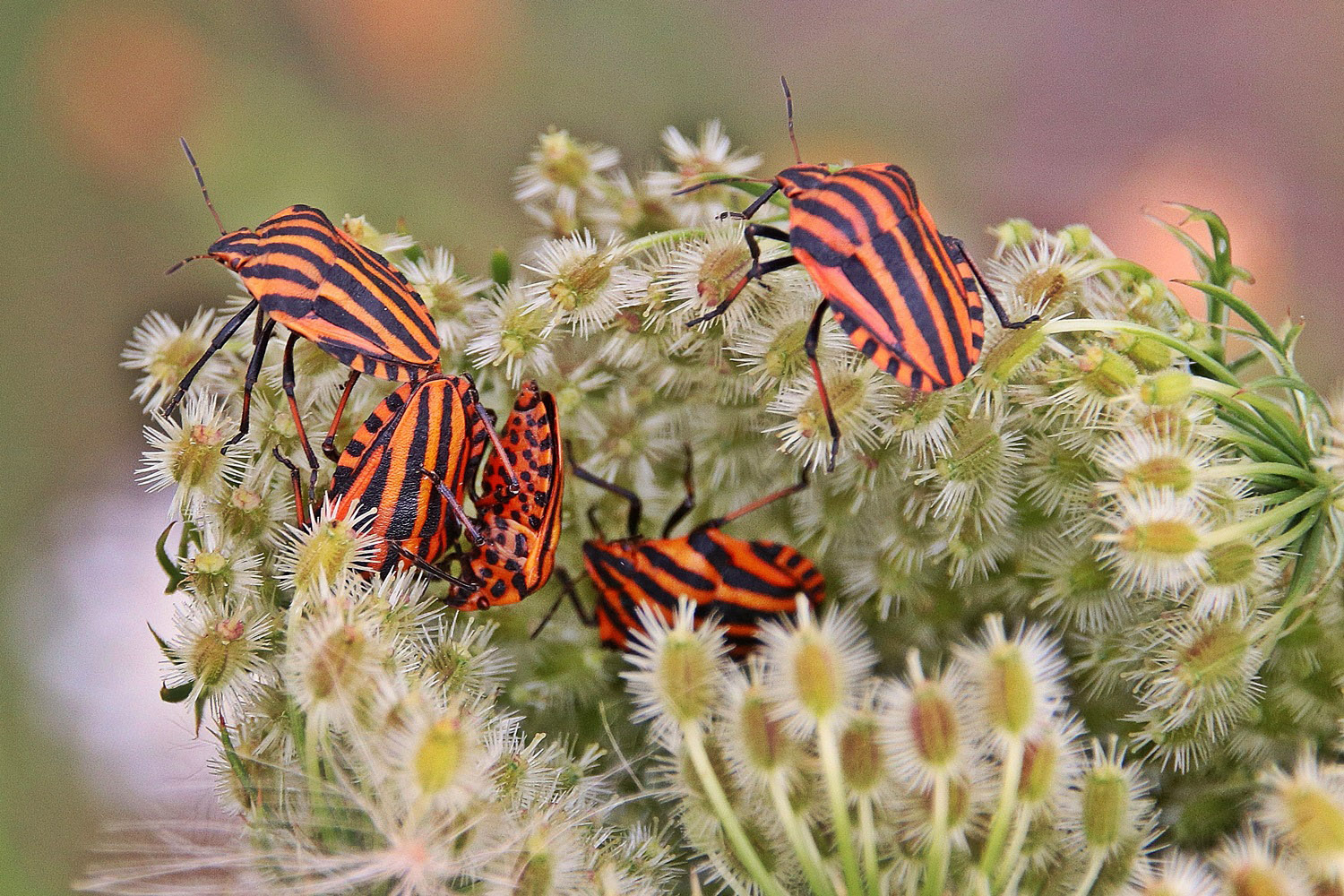
Ministrel Bugs (Graphosoma lineatum) suck the plant juices of Umbelliflorae, which is why they are commonly found in the inflorescences of wild carrot (Daucus carota). The colorful animals have spread in recent years increasingly from the south and colonize dry-warm meadows, fallow land and roadsides with natural plant stripes. The black and red warning color indicates potential predators on the inedibility of the bugs. Photo: Susen Schiedewitz
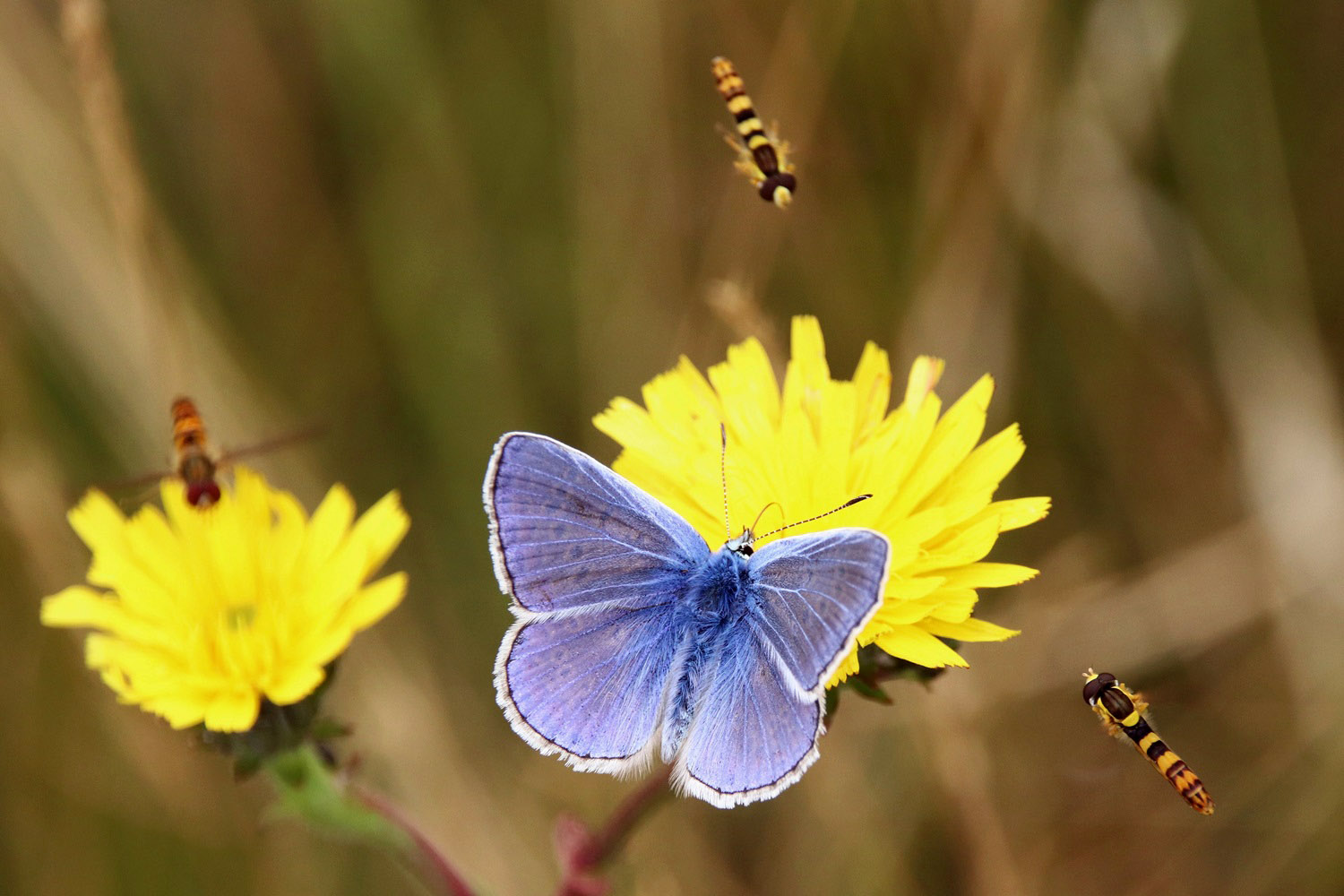
The Common Blue (Polyommatus icarus) is one of the most common butterflies in the technology park. Its caterpillars feed on various members of the papilionaceae family, of which the Granny's Toenails (Lotus corniculatus) flowers in the dry-warm grassland areas of the park in high density. The moths fly, along with hoverflies and other nectar-seeking insects, also on asters. Photo: Susen Schiedewitz
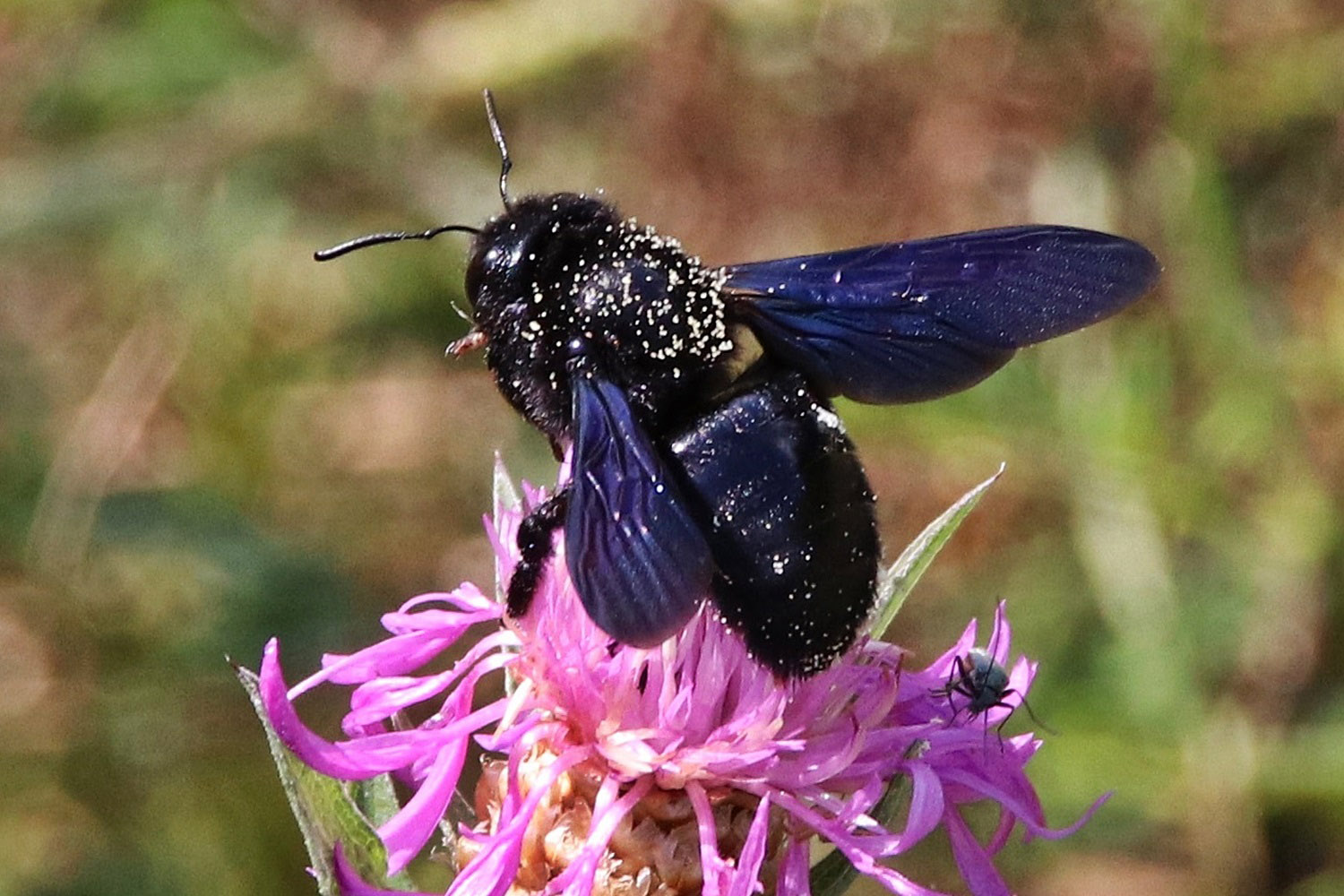
The Violet Carpenter Bee (Xylocopa violacea) is with its almost 3 cm body length the largest domestic bee. This heat-loving species has also spread increasingly in Germany in recent years. In the Technology Park, she finds, in addition to sunny and flowery meadows, sufficient deadwood in order to use them to build up herding tubes for the larvae with her powerful mouthparts. Photo: Susen Schiedewitz
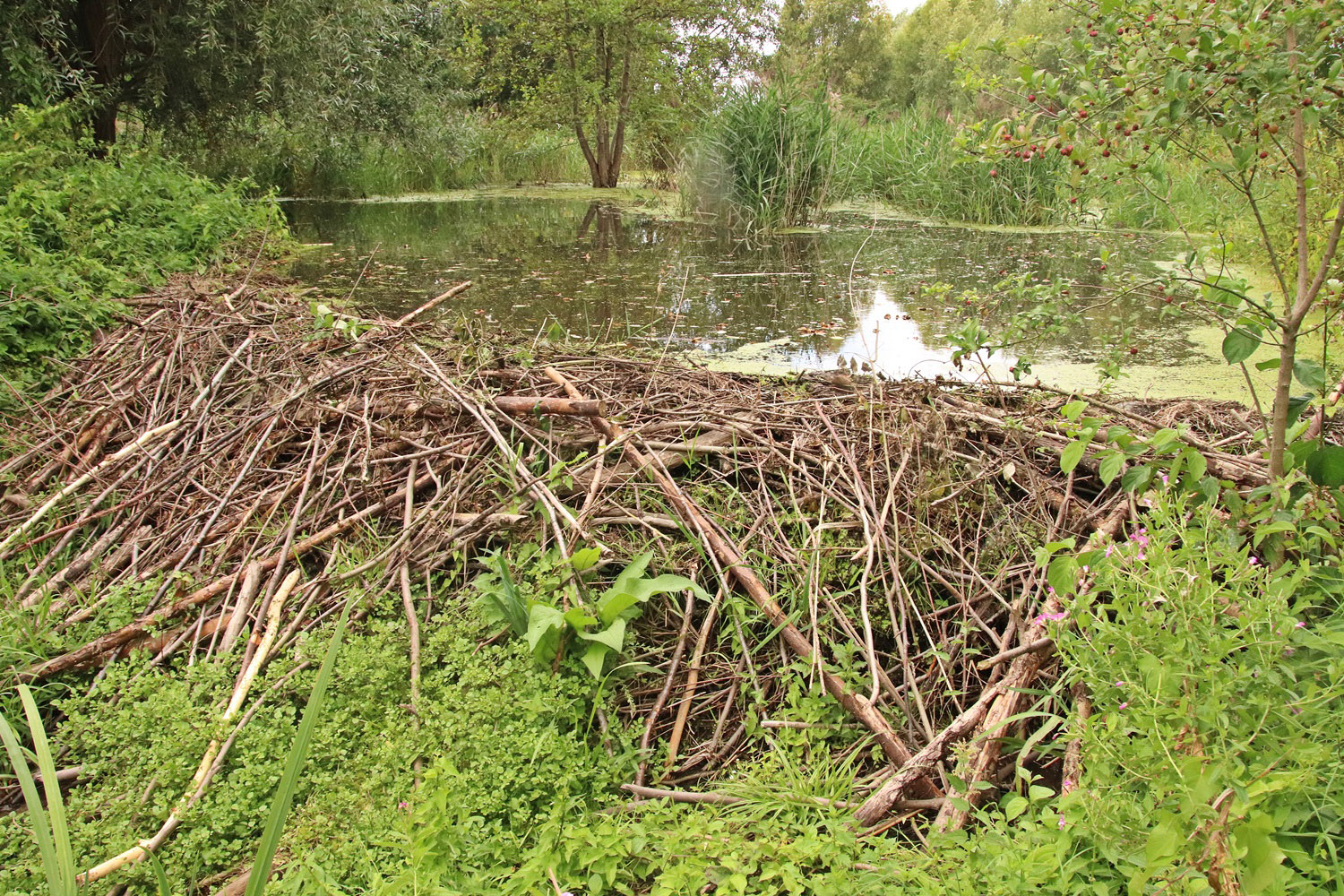 The imposing beaver dam in the southeastern part of the Technology Park has transformed sections of the Kleine Sülze creek into a sunny, open water surface. In addition to dragonflies and other invertebrates, bats, various species of birds, grass snakes and amphibians benefit from the new structural diversity of the water body. Photo: Susen Schiedewitz
The imposing beaver dam in the southeastern part of the Technology Park has transformed sections of the Kleine Sülze creek into a sunny, open water surface. In addition to dragonflies and other invertebrates, bats, various species of birds, grass snakes and amphibians benefit from the new structural diversity of the water body. Photo: Susen Schiedewitz
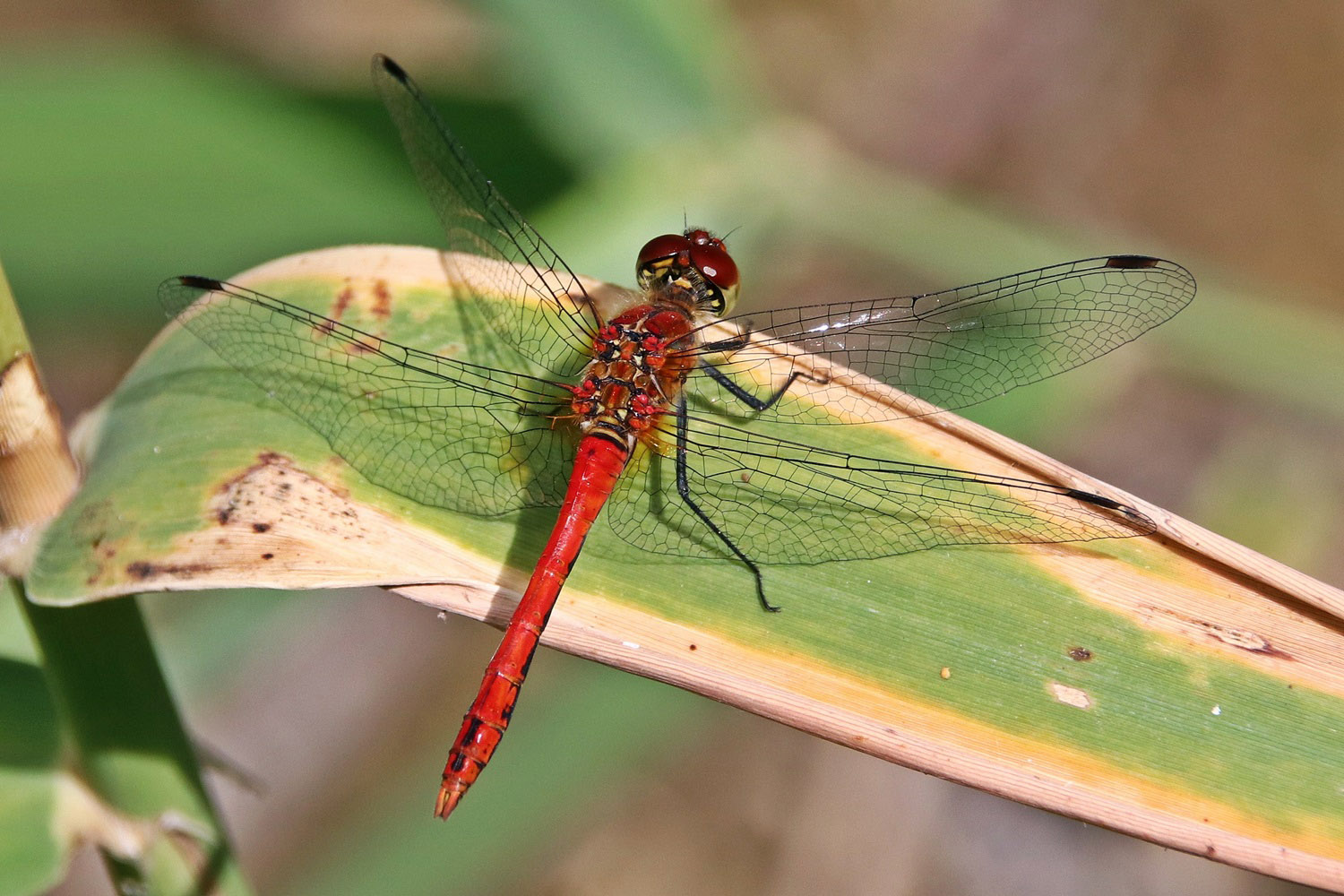 The Ruddy Darter (Sympetrum sanguineum) is found in high density in the waters in the Technology Park. It is one of the first dragonfly species that colonize the newly created, flow-calmed water areas north of the beaver dam. Photo: Susen Schiedewitz
The Ruddy Darter (Sympetrum sanguineum) is found in high density in the waters in the Technology Park. It is one of the first dragonfly species that colonize the newly created, flow-calmed water areas north of the beaver dam. Photo: Susen Schiedewitz
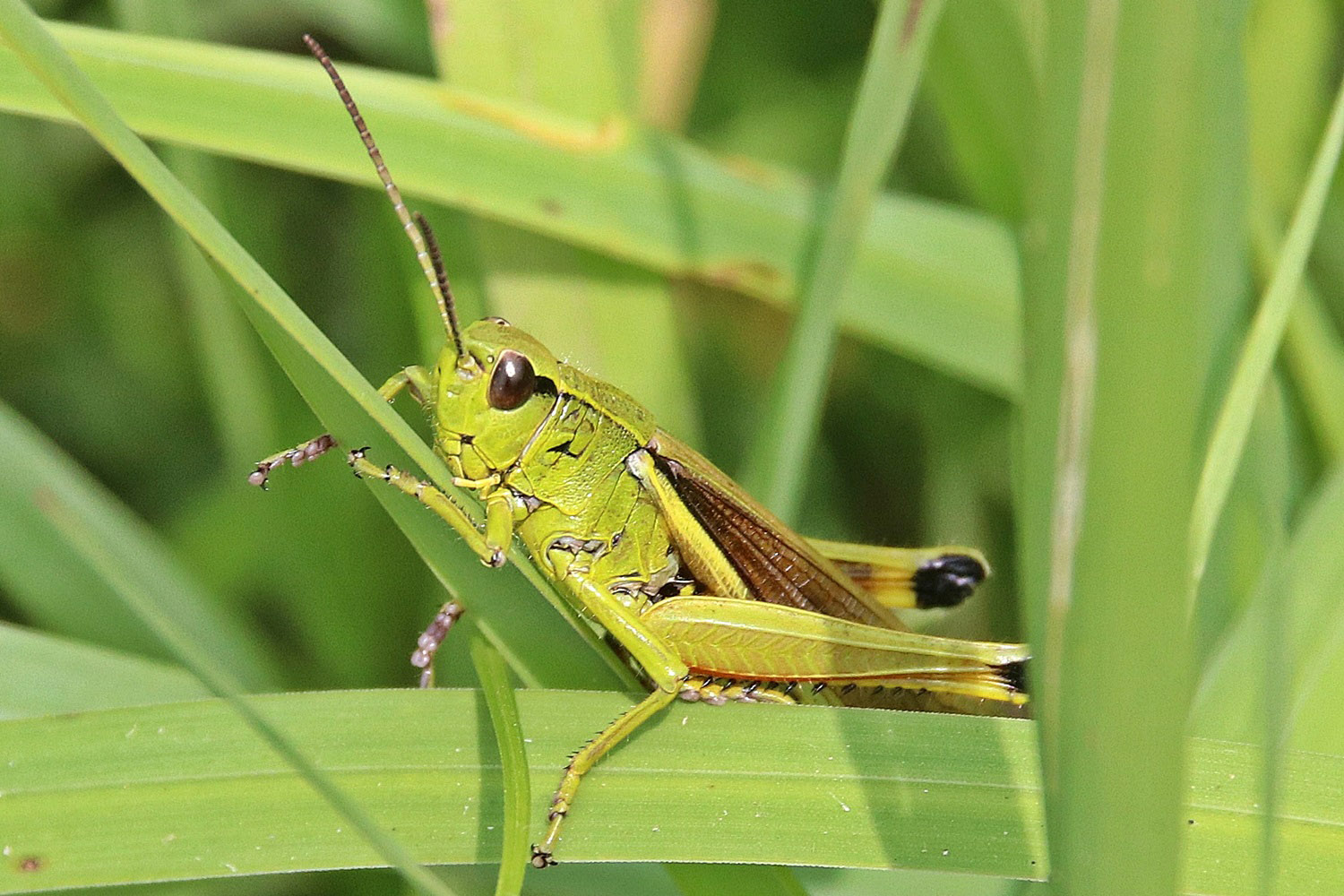
Large Marsh Grasshoppers (Stetophyma grossum) benefit particularly from the backwater of the Kleine Sülze creek and the associated wetness of the adjacent wet meadows, since their eggs and larvae need high humidity for their development. The species is classified as endangered in the Red List of Saxony-Anhalt due to the decline of natural wetlands. Photo: Susen Schiedewitz